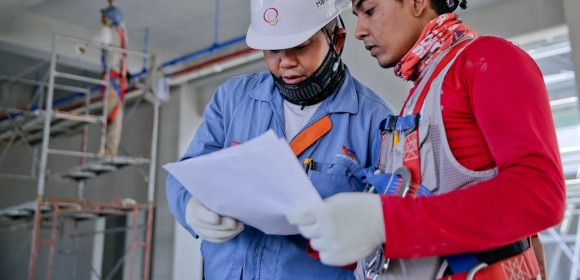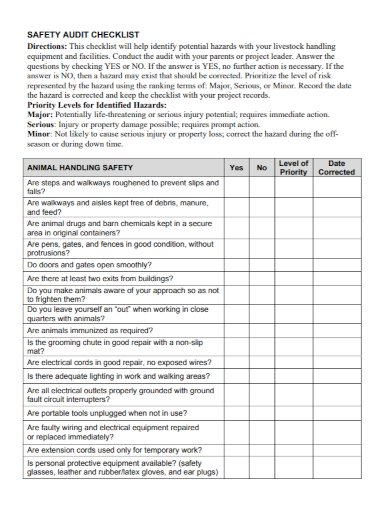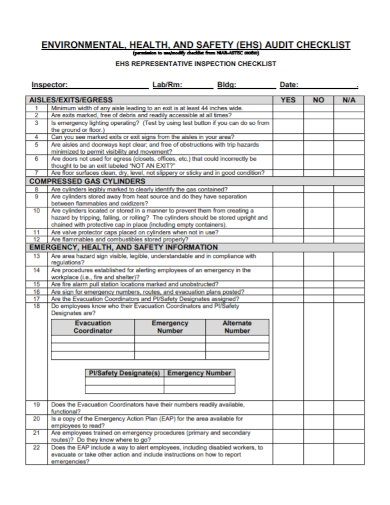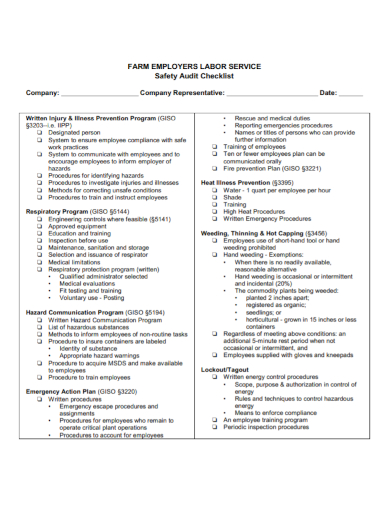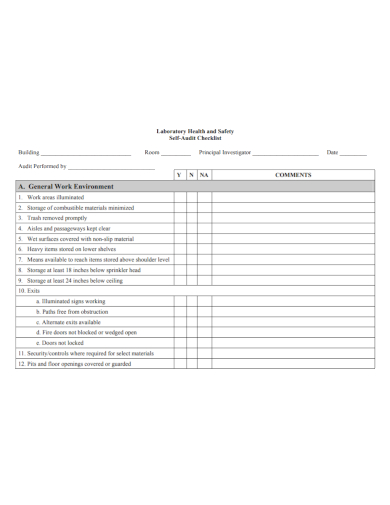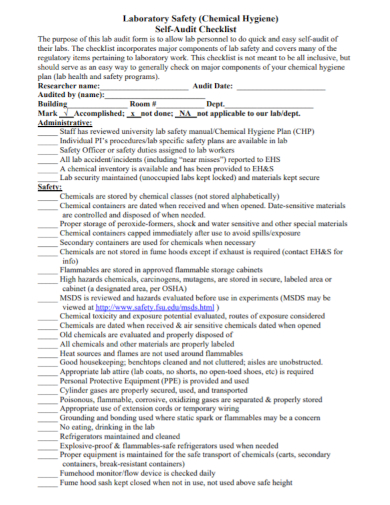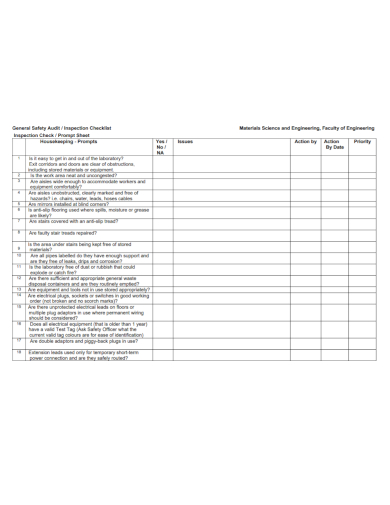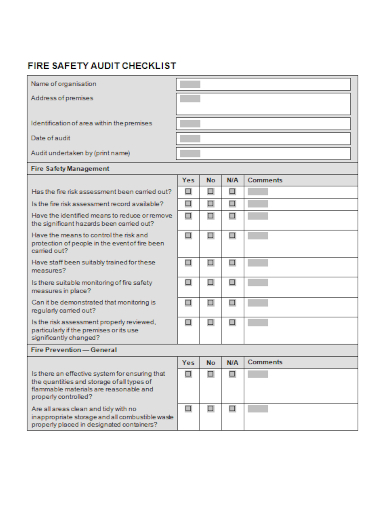For every workplace environment and worksite in the world, health and safety of each employee is and should always be paramount. Regardless of work type, shape, and scale, employees will always have a legal right to be safe at work, and employers should always ensure that it is so. Especially for worksites that continuously expose their employees to numerous health risks and safety hazards like construction sites and laboratories. It’s important for employers and site supervisors to make sure that the workplace provides a sense of safety and security for each employee and individual that might interact with the workplace. Safe workplaces allow your employees to be able to work confidently and efficiently, rest assured that danger does not rest upon the people that you employ. Not only does it only protect the welfare of your employees, it also keeps the business moving by making sure that none of your internal company and business operations are hindered by business related accidents.
Commitment to occupational health and safety is an important step toward achieving a safe and productive working environment. A good way to establish this is by using a safety audit checklist. It’s a tool that will help evaluate the safety conditions and practices in any workplace in order to follow common safety standards and regulations. It lists safety criteria to be met to better address compliance gaps and provide opportunities to improve the workplace environment. Employers tend to set up well established safety and emergency plans in and around the workplace. From fire plans to evacuation plans, these policies ensure the safety of each individual, and they work best when supported with a tool like a safety audit checklist. To get a good idea of what this document is and how it works, check out these safety audit checklist samples that we have listed down below. Once you’ve acquainted yourself with the document, feel free to use these samples as guides or even templates for your own safety audit checklist.
10+ Safety Audit Checklist Samples
1. Safety Audit Checklist Template
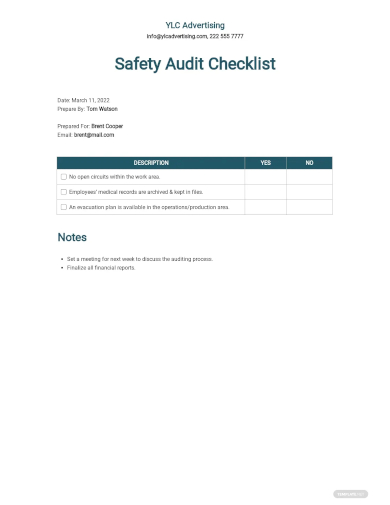
2. School Safety Audit Checklist Template
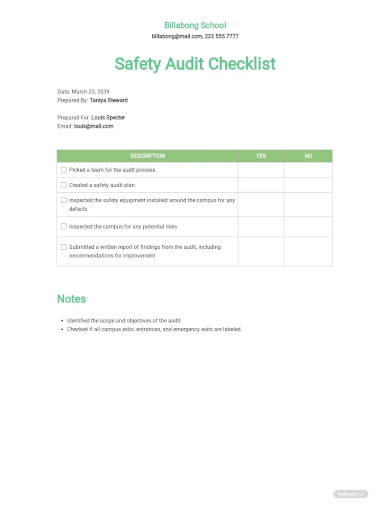
3. Safety Audit Checklist
4. Electrical Safety Policy Self Audit Checklist
5. Health and Safety Audit Checklist
6. Employer Safety Audit Checklist
7. Laboratory Health and Safety Audit Checklist
8. Laboratory Safety Hygiene Audit Checklist
9. General Safety Audit Inspection Checklist
10. Annual Home Safety Audit Checklist
11. Fire Safety Audit Checklist
What Is a Safety Audit Checklist?
Safety audit checklists are tools usually used by safety officers, safety supervisors, employers, and inspectors to undertake critical safety inspections and examinations in the workplace. It covers every factor and operation that is involved in and every work related activity in the work environment. A checklist makes sure that the inspection process goes smooth and well, and is actually effective by establishing a proper guideline for each component that is to be inspected. Checklists help assess the safety of the work environment and proactively asses the risks or hazards that could potentially lead to fatal work related incidents that would’ve been easily prevented. With the help of a properly established checklist, safety inspectors should be able to examine every work related activity, operation, and work component that could pose a threat to the lives and welfare of everybody present in the work environment. These checklists are tailored specifically to the immediate needs of a workplace and the nature of the work environment.
What Should Be Included in a Safety Audit Checklist
The best safety checklists are those that are specific to the nature of the work environment’s specific needs. That’s why it’s important to have your document tailored to the nature of the operations in the workplace. The examples below do not list all the possible components, but they should be included because they are the most basic ones and are more or less present in every work environment.
- Environment
- Containers
- Electrical
- Fire protection and prevention
- Material handling
- Personal Protective Equipment
- Storage facilities
- Paths and walkways
- Safety devices
- Control panels
- Hygiene and first-ad facilities
- Electric powered equipment and other electronic devices
- Security technology and security personnel
- Psychosocial hazards
That should be able to cover all, if not most of the basic components your checklist has to cover. Other more specific components depend entirely on you and the nature of work that you do. Offices might focus on fire escape and fire prevention, industrial spaces on handling of heavy machinery and PPEs, and wide open spaces might look out for environmental hazards. Regardless, make sure to be aware of those specifications, to make sure that everything is properly covered.
FAQs
What is a safety checklist?
Safety checklists are paper based documents or sometimes digital based that are often used by safety officers and inspectors to inspect and identify workplace and other occupational hazards.
What are the five steps in workplace inspection?
- Planning and scheduling
- Preparation
- Implementation
- Documentation
- Follow up
What are the five elements of safety?
The five elements of safety are the following;
- Management commitment and responsibility
- Safety and accountabilities
- Appointment of key safety personnel
- Coordination and preparation of emergency response planning
- And documentation.
Workplace safety is and should always be the top priority for every workplace supervisor, manager, and employer out there. Keeping a worksite safe may not be an easy and quick task, but it can also be deeply rewarding. Not only do employees have a legal right to be safe and secure at work, a safe working environment can also drastically improve your employee’s work ethic and productivity. A safe worksite will give your employees a safe environment to work with, making them happy and always willing to come back to work.
Related Posts
FREE 20+ Monthly Checklist Samples
FREE 15+ Checklist Samples
FREE 12+ Information Technology Audit Report Samples
FREE 11+ Laboratory Audit Report Samples
FREE 10+ Site Inspection Checklist Samples
FREE 10+ New Hire Orientation Checklist Samples
FREE 10+ Plumbing Maintenance Checklist Samples
Checklists to Boost Efficiency and Reduce Mistakes
FREE 10+ Sample Risk Assessment Checklist
FREE 10+ Workplace Inspection Checklist Samples
FREE 20+ Employee Checklist Samples
FREE 18+ Construction Checklist Samples
FREE 14+ Sample Health and Safety Policy
FREE 13+ Equipment Checklists
FREE 10+ Building Inspection Checklist Samples
